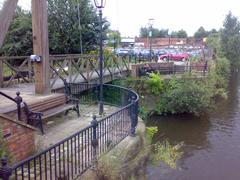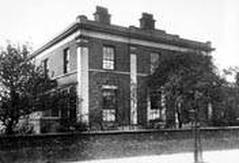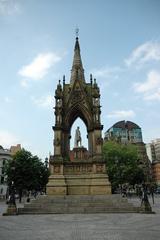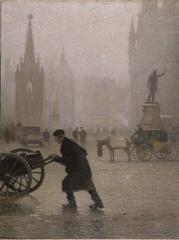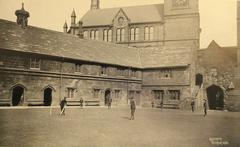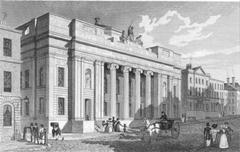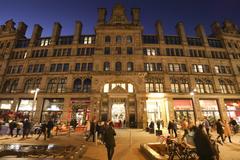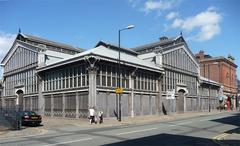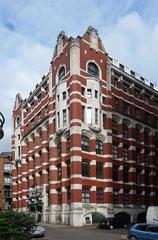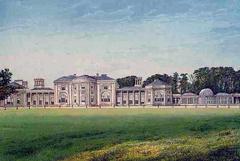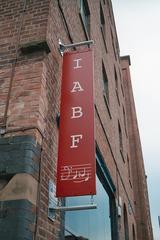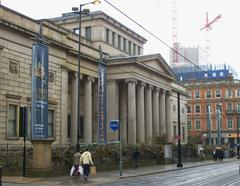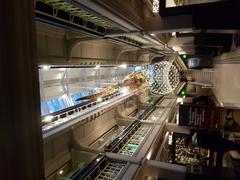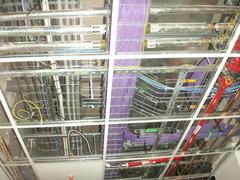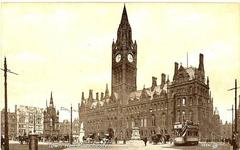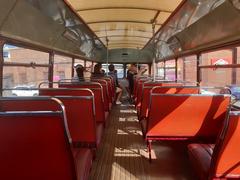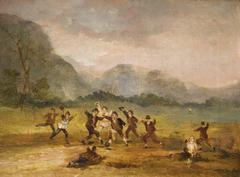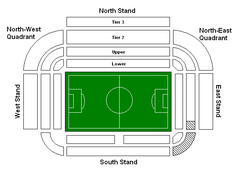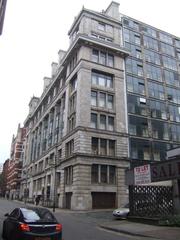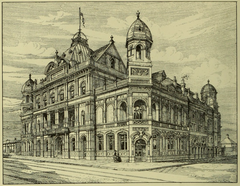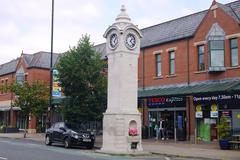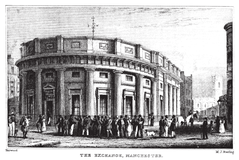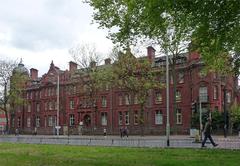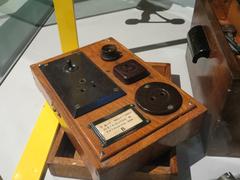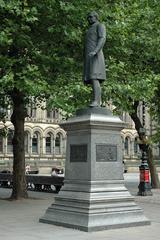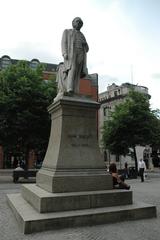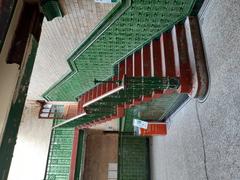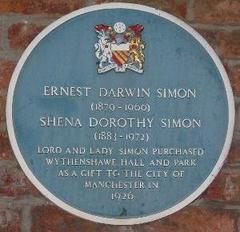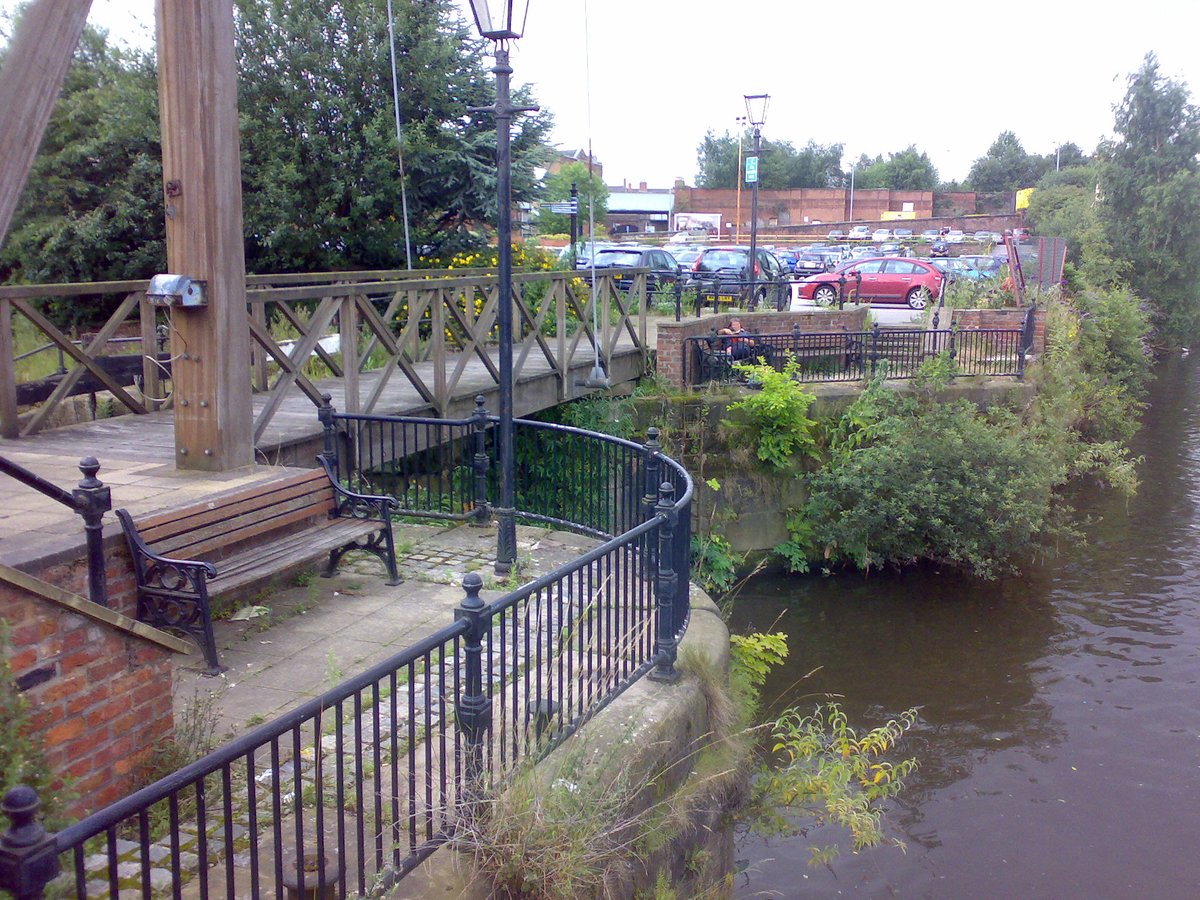
Manchester and Salford Junction Canal: Visiting Hours, Tickets, and Historical Sites Guide
Date: 15/06/2025
Introduction
Hidden beneath Manchester’s vibrant city streets, the Manchester and Salford Junction Canal is an enduring testament to the city’s industrial ingenuity and resilience. Built in the early 19th century to connect the River Irwell and the Rochdale Canal, this 0.625-mile canal was pivotal in streamlining goods transport during Manchester’s industrial boom. Though now largely subterranean and inaccessible, the canal’s unique engineering—such as its gas-lit tunnel and the UK’s only duplicated double lock staircase—continues to fascinate historians and visitors alike. This comprehensive guide provides historical context, practical visitor information, and tips on exploring the canal’s legacy through nearby attractions and heritage-focused activities (Wikipedia; Grace’s Guide; Waterways.org.uk; London Rail).
Table of Contents
- Origins and Planning
- Construction and Engineering Features
- Operational History and Commercial Significance
- Decline, Closure, and Later Uses
- Visiting the Manchester and Salford Junction Canal
- Frequently Asked Questions (FAQ)
- Visuals and Media
- Conclusion and Visitor Recommendations
- References and Further Reading
Origins and Planning
The Manchester and Salford Junction Canal was conceived to address the logistical challenges of transporting goods across Manchester’s fragmented waterways. In the late 18th and early 19th centuries, the lack of a direct link between the Mersey and Irwell Navigation and the Rochdale Canal forced goods to be unloaded, carted across the city, and reloaded—a costly and inefficient process (Wikipedia).
Initial proposals for a connecting canal date back to 1799, but opposition from vested interests delayed progress for decades. It was not until 1836, under engineer John Gilbert, that construction commenced, funded in part by the Manchester Bolton & Bury Canal proprietors (Grace’s Guide).
Construction and Engineering Features
Completed by 1839, the canal stretched just 0.625 miles, with over a quarter of its length running through a tunnel beneath central Manchester (Waterways.org.uk). The route began at the River Irwell near Water Street, coursed beneath Water Street, Deansgate, and other city streets, then emerged near Great Bridgewater Street to join the Rochdale Canal.
Key engineering highlights included:
- Gas-lit Tunnel: The canal’s tunnel, illuminated by gas lights every 20 yards, was a marvel of its time, providing a continuous towpath for boat haulage.
- Locks: Seven locks, arranged in three paired sets, including the UK’s only duplicated double lock staircase, accommodated large Mersey Flats (71 feet 11 inches by 14 feet 4 inches).
- Integration with Infrastructure: The Great Northern Warehouse, built above the canal in 1885, featured lift shafts and direct links to the canal, enabling seamless transfer of goods to and from rail and storage (London Rail).
Operational History and Commercial Significance
The canal officially opened in 1839, but its commercial potential was limited due to the near-simultaneous opening of the more direct Hulme Locks Branch Canal, which diverted much of the expected trade (Waterways.org.uk). Still, the canal played a crucial supporting role in facilitating goods movement, especially serving the Great Northern Warehouse, a key logistics hub integrating canal, rail, and road networks (Wikipedia).
Decline, Closure, and Later Uses
After its acquisition by the Mersey & Irwell Navigation in 1842 and subsequently by the Bridgewater Trustees, the canal saw declining use. By the early 20th century, usage dwindled, limited to warehouse and railway connections. The canal was formally abandoned for navigation after 1922, with sections infilled or built over (Wikipedia).
During World War II, the canal’s tunnel served as a deep air-raid shelter, equipped with reinforced walls and essential facilities for civilian protection (Waterways.org.uk). Today, the tunnel is a Grade II listed structure, recognized for its historic and architectural significance (Historic England).
Visiting the Manchester and Salford Junction Canal
Guided Walking Tours
While the canal itself is inaccessible, local heritage groups occasionally organize walking tours tracing its historic route above ground. These tours typically highlight engineering features, remnants, and the canal’s significance within Manchester’s industrial landscape (Hidden Manchester).
Nearby Attractions
- Great Northern Warehouse: Now a vibrant leisure complex, the warehouse sits above the canal’s former route. Visitors can view bricked-up canal portals and enjoy dining, shopping, and cultural events.
- Museum of Science and Industry: Offers in-depth exhibits on Manchester’s industrial and canal history (Museum of Science and Industry).
- Castlefield and Deansgate: Features restored canal basins, interpretive plaques, and a lively atmosphere with cafes and bars.
- Bridgewater Canal and Rochdale Canal: Both offer scenic, accessible towpath walks and historical features.
Accessibility
- The canal’s tunnel and towpaths are not open to the public for safety and preservation reasons.
- Surface routes tracing the canal’s path are accessible year-round along city streets.
- The Bridgewater Canal towpath is surfaced and wheelchair-friendly at multiple points, including Monton, Worsley, and Patricroft.
- Assistance dogs are welcome on towpaths and public green spaces.
Visiting Hours & Tickets
- Canal Route: The above-ground route is accessible 24/7 and free to explore.
- Guided Tours: Offered occasionally by heritage groups and may require advance booking and a small fee (Hidden Manchester).
- Museums and Attractions: Check official websites for individual opening hours and ticketing.
Frequently Asked Questions (FAQ)
Q: Can I take a boat trip on the Manchester and Salford Junction Canal?
A: No, the canal is no longer navigable and is mostly underground.
Q: Are there walking tours available?
A: Yes, local groups occasionally offer guided walks focusing on the canal’s history. Check with heritage organizations for the latest schedules.
Q: Is the canal wheelchair accessible?
A: The tunnel is closed, but the Bridgewater Canal towpath and associated green spaces are wheelchair accessible.
Q: Do I need tickets or to pay an entrance fee?
A: No tickets are required for the canal’s surface route. Fees may apply for special guided tours or museum exhibits.
Q: What are the best nearby attractions?
A: The Great Northern Warehouse, Castlefield canal basins, Museum of Science and Industry, Bridgewater Canal, and MediaCityUK are all recommended.
Visuals and Media
Enhance your visit with online resources:
- Historic photographs and maps: Subterranea Britannica
- Virtual tours and event listings: Hidden Manchester
- Heritage galleries: Museum of Science and Industry
Conclusion and Visitor Recommendations
The Manchester and Salford Junction Canal stands as a testament to Manchester’s industrial innovation and urban transformation. Although direct access is restricted, the canal’s story lives on through surface-level walks, interpretive features, and the rich cultural landscape of the surrounding area. Explore nearby accessible canals and landmarks to experience the city’s remarkable heritage.
For a deeper dive, utilize resources like the Audiala app for guided tours and updates on heritage events. Engaging with Manchester’s waterways—visible and hidden—offers a unique perspective on the city’s past and present.
References and Further Reading
- Manchester and Salford Junction Canal – Wikipedia
- Manchester and Salford Junction Canal – Grace’s Guide
- Manchester and Salford Junction Canal – Waterways.org.uk
- Manchester and Salford Junction Canal – London Rail
- Historic England Listing for Manchester & Salford Junction Canal
- Museum of Science and Industry Manchester
- Hidden Manchester: Manchester & Salford Junction Canal Tunnel
- Subterranea Britannica
- CanalPlanAC
- Time Out Manchester
Experience the hidden story of Manchester’s industrial waterways and let the Manchester and Salford Junction Canal inspire your next urban adventure.
